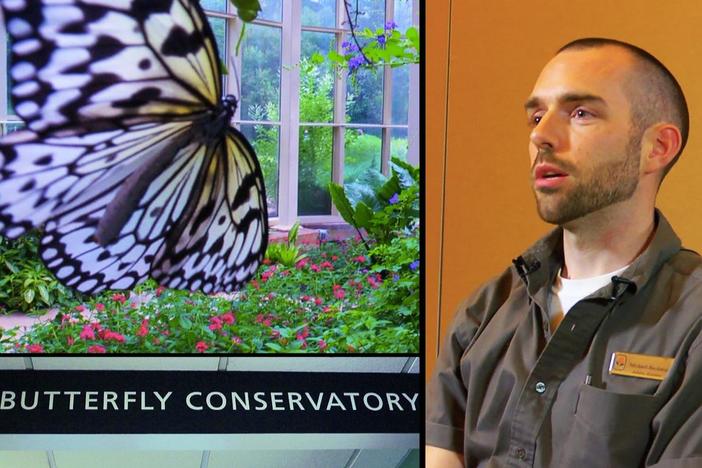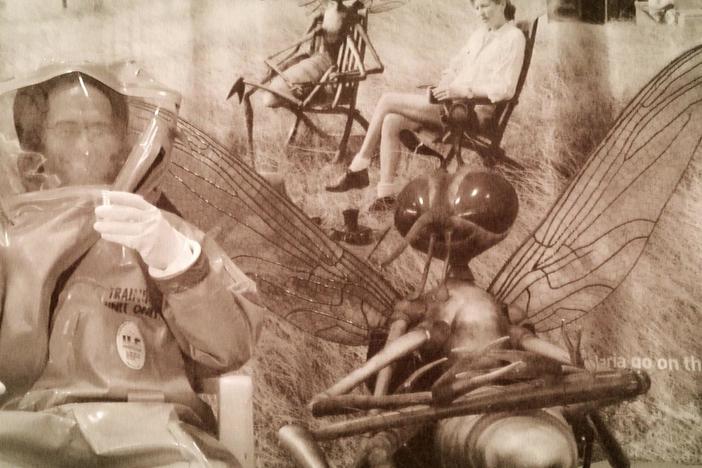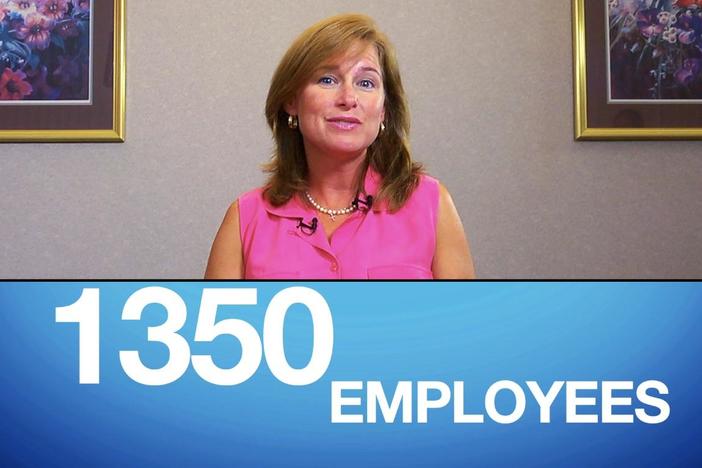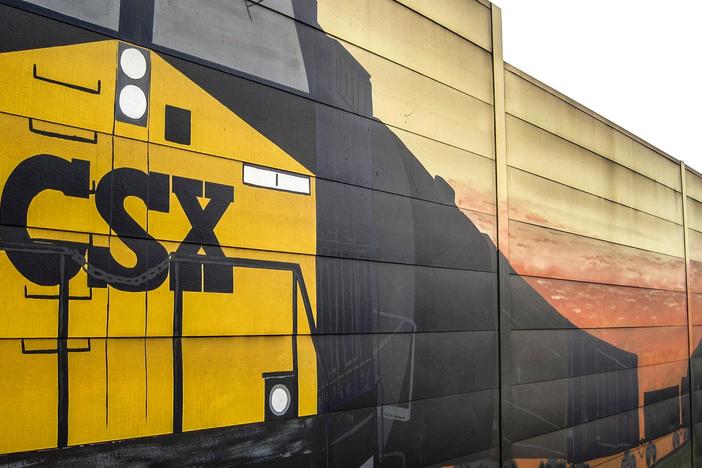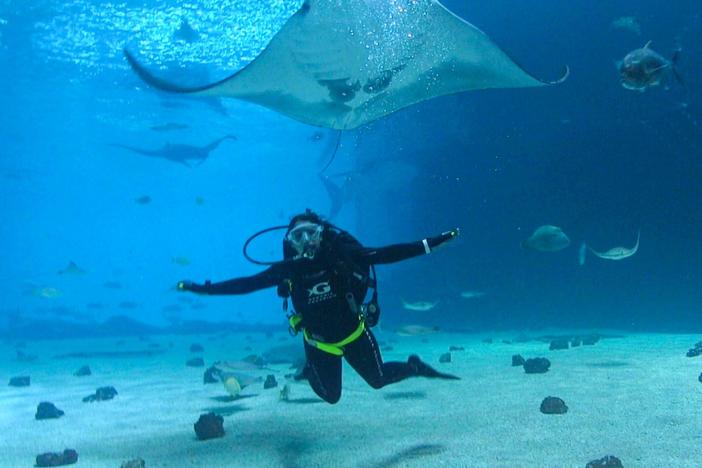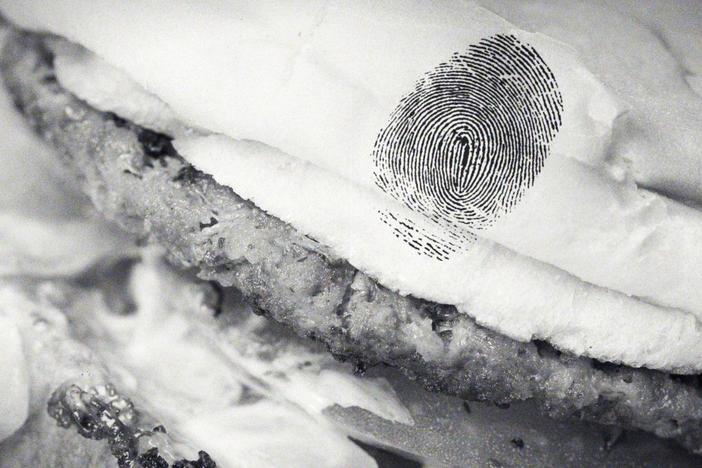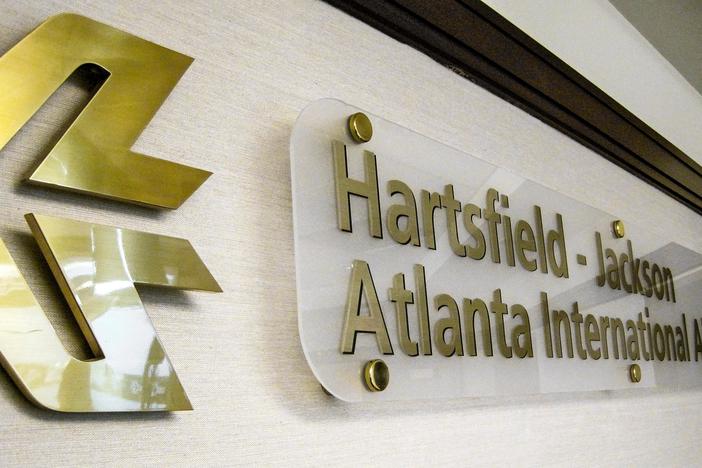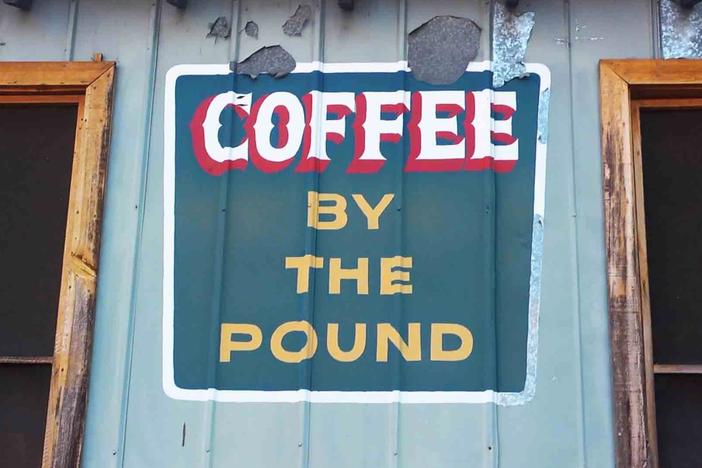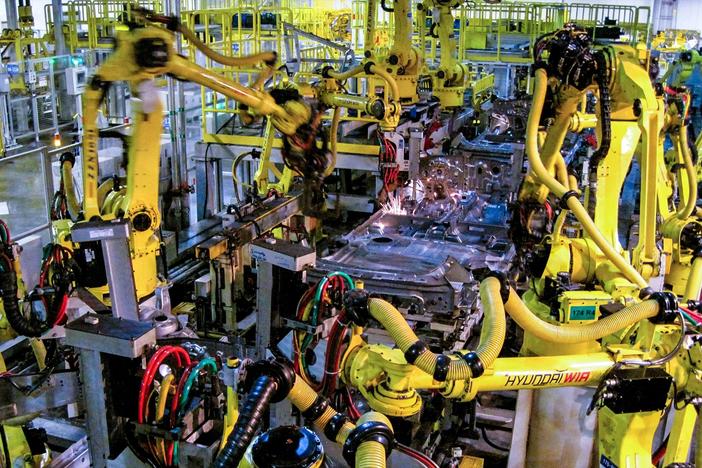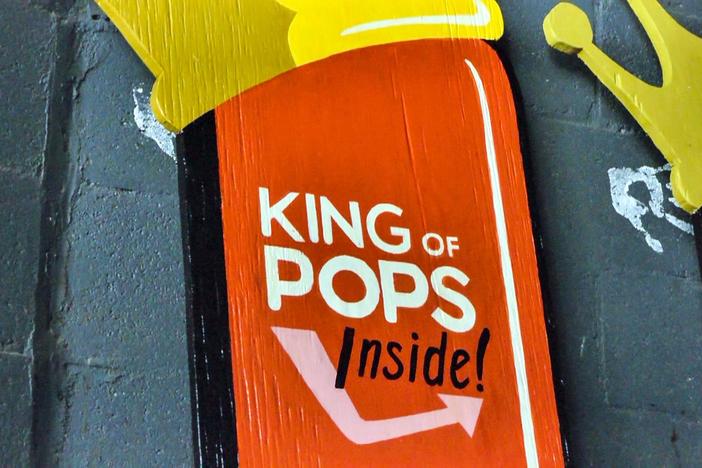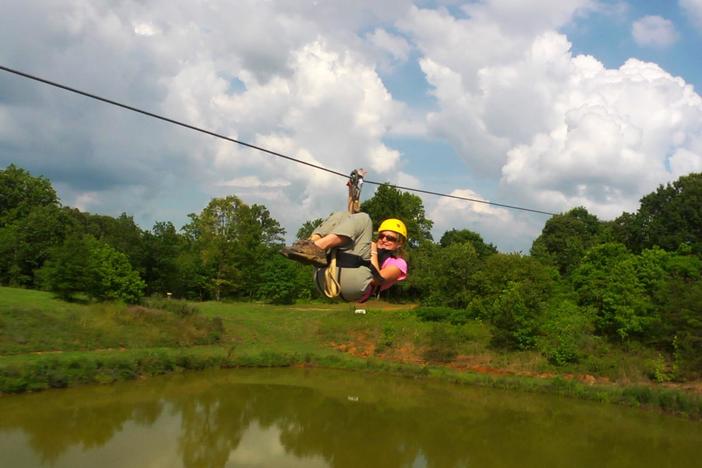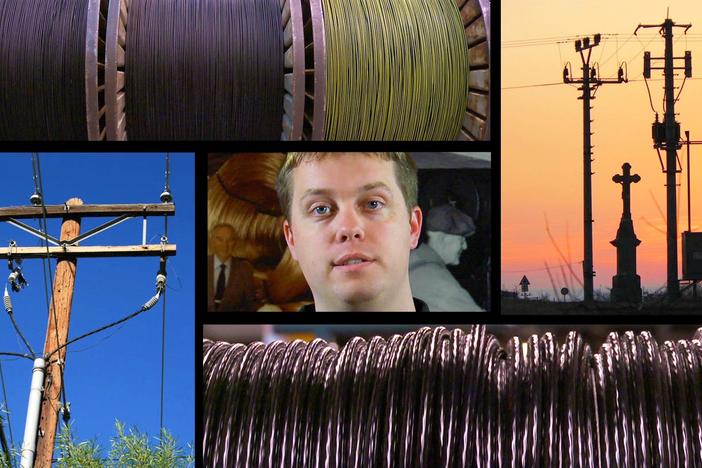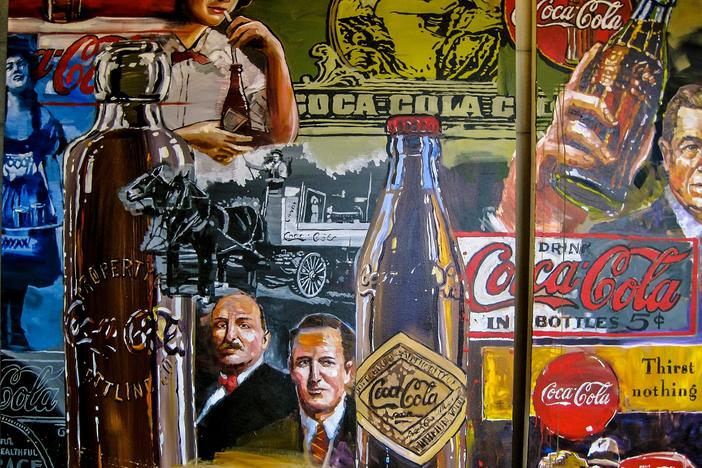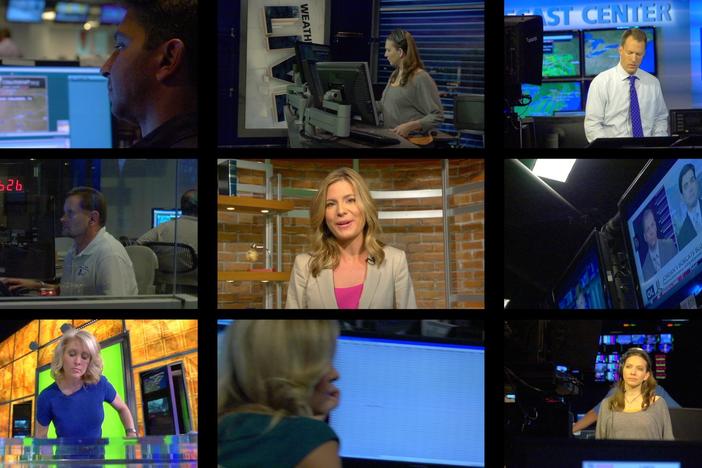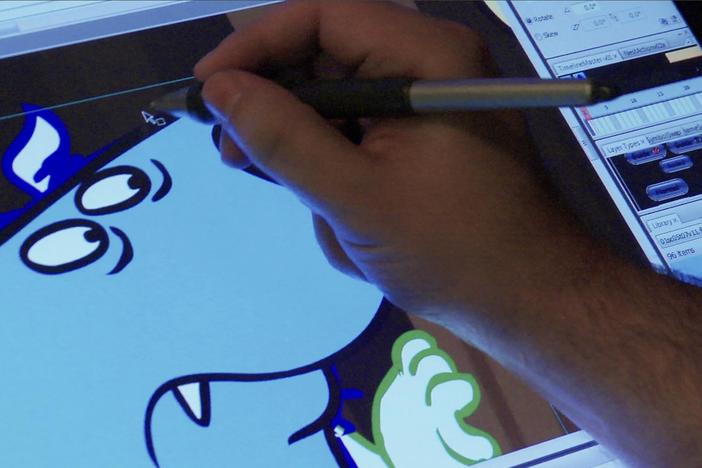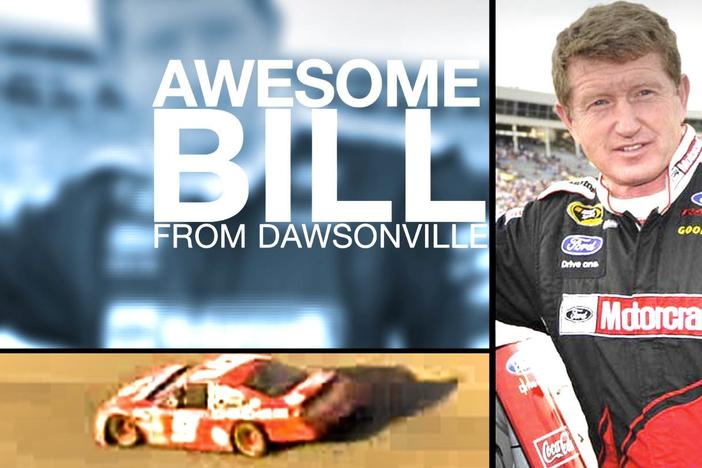Georgia Aquarium
We take a trip beyond the sea ... to downtown Atlanta and a visit to the Georgia Aquarium. From scuba divers to media specialists to aquarists, we meet everyone who maintains and supports this incredible environment—it takes 600 employees and 2,000 volunteers! And the good news is that you don’t have to work at the Georgia Aquarium to swim here. Anybody can dive in, as you’ll learn in this episode.
Georgia Aquarium
We take a trip beyond the sea ... to downtown Atlanta and a visit to the Georgia Aquarium. From scuba divers to media specialists to aquarists, we meet everyone who maintains and supports this incredible environment—it takes 600 employees and 2,000 volunteers! And the good news is that you don’t have to work at the Georgia Aquarium to swim here. Anybody can dive in, as you’ll learn in this episode.
Science
Construct an explanation for the patterns of interactions observed in different ecosystems in terms of the relationships among and between organisms and abiotic components of the ecosystem.
Develop a model to describe the cycling of matter and the flow of energy among biotic and abiotic components of an ecosystem.
Analyze and interpret data to provide evidence for how resource availability, disease, climate, and human activity affect individual organisms, populations, communities, and ecosystems.
Ask questions to gather and synthesize information from multiple sources to differentiate between Earth's major terrestrial biomes (i.e., tropical rain forest, savanna, temperate forest, desert, grassland, taiga, and tundra) and aquatic ecosystems (i.e., freshwater, estuaries, and marine).
Design a solution to reduce the impact of a human activity on the environment.
Develop and use a model to compare and analyze the levels of biological organization including organisms, populations, communities, ecosystems, and biosphere.
Develop and use a model based on the Laws of Thermodynamics to predict energy transfers throughout an ecosystem (food chains, food webs, and trophic levels).
Analyze and interpret data to construct an argument of the necessity of biogeochemical cycles (hydrologic, nitrogen, phosphorus, oxygen, and carbon) to support a sustainable ecosystem.
Plan and carry out an investigation of how chemical and physical properties impact aquatic biomes in Georgia.
1. Why is salinity and pH important to aquarium employees? Why can't the aquarium employees just use tap or hose water to fill up the tanks?
2. Why would the same tank hold whale sharks, stingrays, groupers, and other kinds of ocean life?
Water Quality: measure of the suitability of water for a particular use
Immersion: the act of putting someone or something completely in a liquid or the state of being completely in a liquid
Dorsal: a flat thin part on the back of some fish (such as sharks)
Veterinarian: a person who is trained to give medical care and treatment to animals : an animal doctor
Aquaculture: the farming of fish and other seafood
Gradient: a place where the ground slopes up or down
Salinity: a mixture of salt and water
Osmoregulation: processes that an organism uses to maintain water balance
Osmosis: the process that causes a liquid (especially water) to pass through the wall of a living cell
Nitrogen Cycle: circulation of nitrogen in various forms through nature
-
Special Thanks
Stephanie Johnson, Mayela Alsina, Paul Eleazer, Sophie Gaze, Maureen Flaherty, Cynthia Marrero, Barrett Rhoades, Amy Rollinson
This content was developed under a grant from the U.S. Department of Education. However, this content does not necessarily represent the policy of the U.S. Department of Education, and you should not assume endorsement by the Federal Government.



